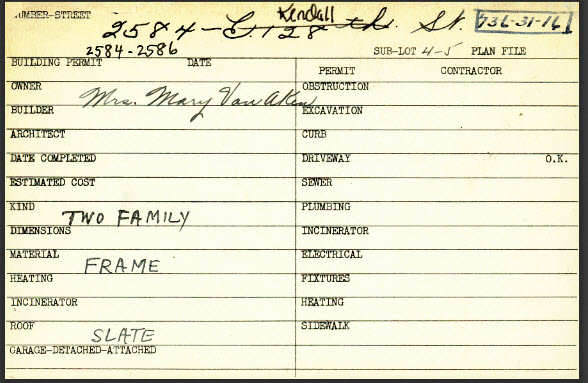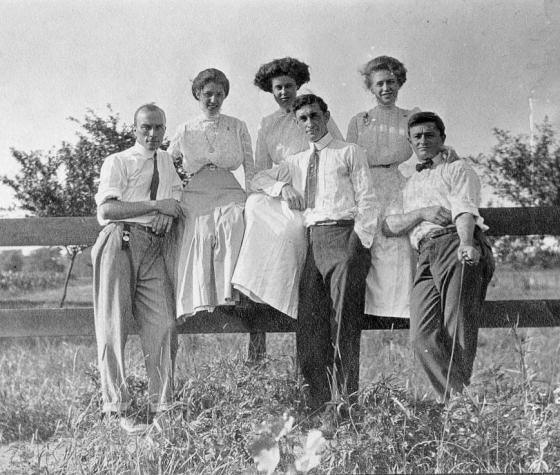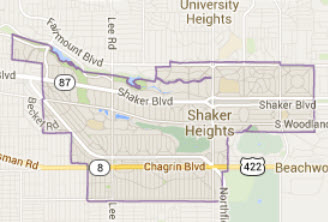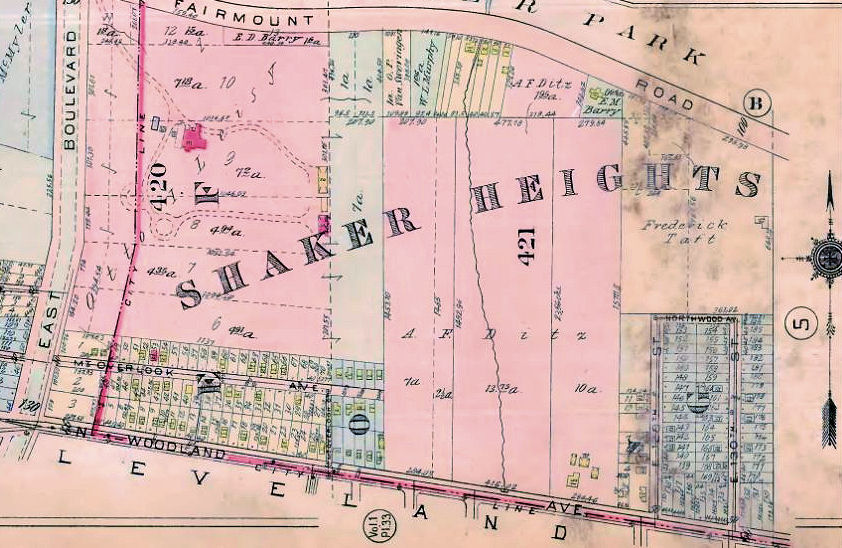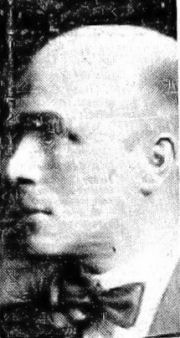|
William J. Van Aken (1884 - 1950) devoted his adult life to his real estate business and to the service of Shaker Heights. (ECH). He is well known as the first mayor of the City of Shaker Heights (1930) who served until his death in 1950. His support of the Van Sweringen brothers was so strong, some called him "the third Van." An aspect of Van Aken's service to Shaker Heights that is not as well known began years before there was a City of Shaker Heights. He served as council member, then mayor of Shaker Village until it became Shaker Heights Village. Before that he was actively involved in the founding of Shaker Village when it broke away from Cleveland Heights in 1911. Further, as Dr Virginia Dawson's essay explains, it was Van Aken who proposed the school district remapping in 1912 that brought he Shaker Square area of Cleveland into the Shaker Heights school district. 1910 Southeast Cleveland was home to many manufacturing companies and foundries. Van Aken worked for one of them, National Malleable Castings. A high school graduate, he had started as an office boy and was now a bookkeeper.
In 1910 William Van Aken was 25 years old,
unmarried, and living with his widowed mother and
two older unmarried step-sisters Anna Hank and Helen
Hank. on the north side of North Woodland
Road at East 125th Street. He was in Cleveland
Heights, on its southern border. Across North Woodland Road - today Larchmere Boulevard -
was Newburgh City. |
|
|
|
1911 Van Aken was working with his friends, O.P. and M.J. Van Sweringen, pursuing a shared vision of creating Shaker Heights. [ For more on their friendship, read Virginia Dawson's essay on his role in shaping the Shaker Heights school district.] The first step was to create Shaker Village, by detaching an area from the southern part of Cleveland Heights. This was done by a petition to separate. Van Aken was the first to sign it. He may have obtained the other signatures.
The first signatures on the petition
were from Shaker Village's western-most
area, Woodland, where many
foundry and factory workers, often
Bohemian and Hungarian immigrants,
lived.
www.ShakerBuildings.com includes the building card for the Mary Van Aken home.
One possibility: after William Van Aken and his wife moved out in 1916 (they had two children by that time), his mother converted the house to two-family. To see both sides of the card, click here and download the card. The picture below was taken near the new house and shows how semi-rural the area was. |
||
|
|
||
|
| 1911 |
|
| 1912 |
|
|
Van Aken's listings in the 1911 and 1912 Cleveland phone directories |
|
|
|
||
|
|
The map labels
"N" as the "Mary Van Aken proposed
allotment." The Van Aken home is the first
one on East 128th in her allotment. The red
line (North. Woodland) marks the border between
Shaker Heights and Cleveland, (In early 1913
Newburgh City became part of Cleveland.). The land north
of Northwood Road, up to Fairmount
(now Fairhill) Road, was a sandstone quarry. It
would become the home of an armory and is
now owned by the Cleveland Skating Club. |
|
|
How could the Van Sweringens have moved the border to keep the Van Aken home in Shaker Heights? They may have persuaded the group petitioning the county to detach from Shaker Heights and join Cleveland, to move the eastern boundary, as stated in its petition, to between East 127th and East 128th. What they could have given in exchange was a promise not to oppose the petition. Whatever was done, the petition took a long time - 18 months - from its initial presentation until annexation. |
|
1916 In 1916 the William Van Aken family, now including two children, moves out of Mary Van Aken's home. |
|
1920
William Van Aken
and his family have moved to a new |
|
|
|
||||||||||


